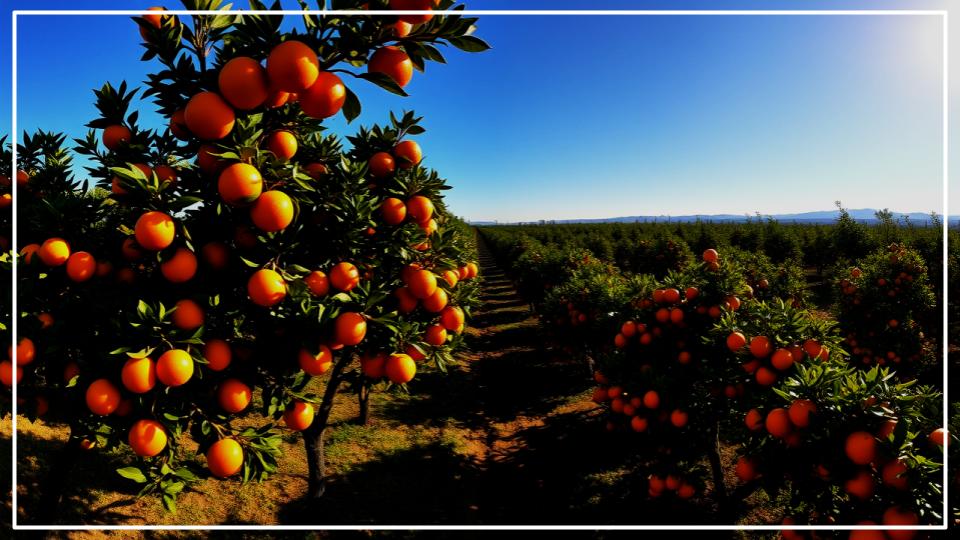
When you peel a juicy orange or pour a tall glass of morning juice, where do you imagine it comes from? For many of us in the United States, our minds immediately wander to the sun-drenched groves of Florida or California. While those states are indeed fantastic citrus producers, the true heavyweight champion of the orange world lies much farther south. The country famous for producing the most oranges is, perhaps surprisingly, Brazil. This article will not only explore Brazil’s incredible dominance in the citrus market but will also inspire you to bring a piece of that sunshine home by teaching you how to cultivate your very own citrus tree, right on your patio.
Quick Tips for the Home Citrus Grower
Here’s what you need to know about growing your own little piece of sunshine.
- Brazil is #1: Brazil dominates global orange production, growing more than one-third of the world’s supply, primarily for orange juice concentrate.
- Container is King: For home gardeners, especially outside of tropical climates, growing a dwarf orange tree in a large pot is the most practical and successful method.
- Sun and Drainage are Non-Negotiable: Citrus trees demand at least 8 hours of direct sunlight daily and soil that drains exceptionally well to prevent root rot.
- Feed Them Well: Oranges are heavy feeders. Use a specialized, balanced citrus fertilizer during the growing season for lush leaves and abundant fruit.
The Surprising King of Citrus: A Global Powerhouse
For decades, Brazil has quietly held the title as the world’s leading orange producer by a staggering margin. According to data from the Food and Agriculture Organization of the United Nations (FAO), Brazil consistently yields over 16 million metric tonnes of oranges annually. To put that into perspective, that’s significantly more than the production of other major players like India, China, and the United States combined.
In my years as a horticulturist, I’ve found this fact often surprises garden enthusiasts. We associate oranges so strongly with our domestic growers, but the reality of the global supply chain is fascinating. The vast majority of these Brazilian oranges are not destined to be eaten fresh but are processed into Frozen Concentrated Orange Juice (FCOJ), which is then exported worldwide. It’s highly likely that the orange juice in your refrigerator began its journey in a Brazilian orchard.

Why Brazil? The Perfect Conditions for an Orange Empire
What makes Brazil such an ideal place for orange cultivation? The answer lies in a perfect storm of geography, climate, and scale. The heart of Brazil’s orange industry is a vast region in the southeast known as the “Citrus Belt,” which primarily encompasses the state of São Paulo and parts of Minas Gerais.
This area boasts a subtropical climate that orange trees, or Citrus sinensis, absolutely adore. With abundant sunshine, warm temperatures, and well-distributed rainfall throughout the year, the conditions are ideal for producing sweet, juicy fruit. This favorable climate allows for a long and reliable growing season, ensuring a consistent and massive harvest year after year. The sheer scale of the orchards in this region is almost unimaginable, with massive, technologically advanced farms dedicated solely to citrus.
I’ve always admired how Brazilian growers have harnessed their natural climatic advantages. They’ve optimized their cultivation practices on an industrial scale, achieving a level of efficiency that is a true testament to horticultural innovation.
The Journey from Grove to Glass
The life of a Brazilian orange is typically geared towards maximum efficiency for juice production. Because of this, the most popular orange varieties grown are those with high juice content, excellent color, and the perfect balance of sugar and acid.
- Citrus sinensis ‘Valencia’: The undisputed queen of juice oranges. The Valencia is a late-season variety, beloved for its high juice yield and rich, sweet flavor. It’s the backbone of the Brazilian juice industry.
- Citrus sinensis ‘Hamlin’: An early-season variety that helps kick off the harvest. While slightly less colorful than the Valencia, it’s a prolific producer and provides a large volume of juice early in the processing season.
Once harvested, these oranges are quickly transported to massive processing facilities where they are washed, squeezed, and the juice is pasteurized and evaporated to create the concentrated product that can be easily frozen and shipped across the globe.
Bringing a Taste of the Tropics Home: A Guide to Growing Citrus
Learning about the world’s largest orange producer is fascinating, but the real joy comes from growing your own. The good news is that with a little care, growing citrus at home is wonderfully achievable, even in colder climates. The secret is container gardening.
Choosing Your Perfect Orange Tree
For home gardeners, especially those of us who have to contend with winter frosts, I always recommend a dwarf variety grown in a large container. Dwarf trees produce the same full-sized, delicious fruit as their orchard counterparts, but on a much more manageable plant.
- For Patios & Small Spaces: Look for dwarf varieties like the ‘Improved Meyer’ Lemon (technically a lemon-orange hybrid), the ‘Trovita’ Orange (a sweet, juicy, and less acidic variety), or the ‘Calamondin’ (a small, tart orange perfect for marmalade).
- For Eating Fresh: The ‘Washington Navel’ orange is a classic for a reason. It’s seedless, easy to peel, and has a wonderfully rich, sweet flavor. A dwarf version is perfect for a pot.
The Essentials of Citrus Care
Caring for a potted citrus tree comes down to a few key principles. Get these right, and you’ll be rewarded with fragrant blossoms and homegrown fruit.
- Sunlight, Sunlight, Sunlight: Citrus trees are sun worshippers. They need a location that receives at least 8 hours of direct sunlight per day. A south-facing patio or window is ideal.
- The Right Container & Soil: Choose a large pot—a 15 to 20-gallon container is a good starting point. Drainage is absolutely critical. Ensure the pot has multiple large drainage holes. Use a high-quality potting mix designed for cacti and citrus, which is lightweight and drains quickly.
- Proper Watering: A common mistake I see is overwatering. Citrus trees despise “wet feet,” which can lead to root rot. Water deeply until you see it run out the bottom of the pot, then allow the top 2-3 inches of soil to dry out completely before watering again.
- Consistent Feeding: Citrus are heavy feeders, especially in pots where nutrients leach out more quickly. From spring through fall, feed your tree every 4-6 weeks with a balanced fertilizer specifically formulated for citrus, which will contain essential micronutrients like iron, manganese, and zinc.
Tools and Materials for Your Patio Orchard
- A Large Container: At least 15-gallon size, with excellent drainage. A half wine barrel or a large resin pot works well.
- Potting Mix: A fast-draining mix, such as one labeled for citrus or palms.
- A Dwarf Citrus Tree: Choose a healthy-looking plant from a reputable nursery.
- Citrus Fertilizer: A balanced, slow-release formula is perfect for consistent feeding.
- A Watering Can or Hose: For deep, thorough watering.
- Pot Feet: Small risers to lift your container off the ground, ensuring drainage holes don’t get blocked.
A World of Flavor in Your Hands
From the vast, sun-drenched orchards of Brazil that quench the world’s thirst for juice, to a single, beautiful tree on your own sunny patio, the orange is a truly global fruit. Understanding the journey of Brazilian oranges gives us a greater appreciation for the food we enjoy every day. But the real magic happens when you take that inspiration and get your hands dirty.
Now that you know the secrets to success, you are more than ready to start your own citrus-growing adventure. There is nothing quite like the pride of picking a warm, fragrant orange from a tree you’ve nurtured yourself. So go ahead, find the perfect spot, and bring a little bit of that endless summer into your home.
Read More
8 Plants That Will Ruin Your Lemon Tree’s Health—Avoid This Costly Error
